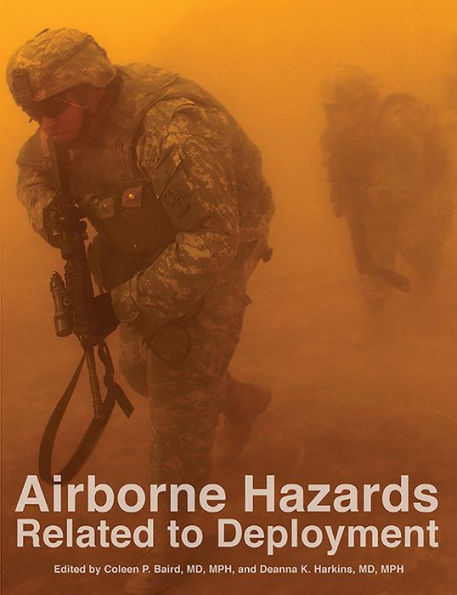Airborne Hazards Related to Deployment
Developed from the Airborne Hazards Symposium held in Washington, DC, in August 2012, this book covers diagnosis and workup of symptomatic individuals, exposure characterization, current epidemiology, the potential role of pulmonary function testing (spirometry) in surveillance, strategic research planning, clinical follow-up and registries, risk communication, etc. Symposium presentations were delivered by a diverse group of scientific experts and contain valuable veteran perspectives. This book represents a compendium of what is currently known regarding the potential long-term health consequences of exposure to airborne hazards during Operation Enduring Freedom, Operation Iraqi Freedom, and Operation New Dawn deployments. Airborne Hazards Related to Deployment presents a balanced, comprehensive approach to furthering the understanding of airborne hazards during deployments and other military operations, ultimately improving airborne hazard prevention, protection, and avoidance while improving healthcare and minimizing adverse health outcomes of our service members and veterans.
1300455071
Developed from the Airborne Hazards Symposium held in Washington, DC, in August 2012, this book covers diagnosis and workup of symptomatic individuals, exposure characterization, current epidemiology, the potential role of pulmonary function testing (spirometry) in surveillance, strategic research planning, clinical follow-up and registries, risk communication, etc. Symposium presentations were delivered by a diverse group of scientific experts and contain valuable veteran perspectives. This book represents a compendium of what is currently known regarding the potential long-term health consequences of exposure to airborne hazards during Operation Enduring Freedom, Operation Iraqi Freedom, and Operation New Dawn deployments. Airborne Hazards Related to Deployment presents a balanced, comprehensive approach to furthering the understanding of airborne hazards during deployments and other military operations, ultimately improving airborne hazard prevention, protection, and avoidance while improving healthcare and minimizing adverse health outcomes of our service members and veterans.
Airborne Hazards Related to Deployment
Developed from the Airborne Hazards Symposium held in Washington, DC, in August 2012, this book covers diagnosis and workup of symptomatic individuals, exposure characterization, current epidemiology, the potential role of pulmonary function testing (spirometry) in surveillance, strategic research planning, clinical follow-up and registries, risk communication, etc. Symposium presentations were delivered by a diverse group of scientific experts and contain valuable veteran perspectives. This book represents a compendium of what is currently known regarding the potential long-term health consequences of exposure to airborne hazards during Operation Enduring Freedom, Operation Iraqi Freedom, and Operation New Dawn deployments. Airborne Hazards Related to Deployment presents a balanced, comprehensive approach to furthering the understanding of airborne hazards during deployments and other military operations, ultimately improving airborne hazard prevention, protection, and avoidance while improving healthcare and minimizing adverse health outcomes of our service members and veterans.
Developed from the Airborne Hazards Symposium held in Washington, DC, in August 2012, this book covers diagnosis and workup of symptomatic individuals, exposure characterization, current epidemiology, the potential role of pulmonary function testing (spirometry) in surveillance, strategic research planning, clinical follow-up and registries, risk communication, etc. Symposium presentations were delivered by a diverse group of scientific experts and contain valuable veteran perspectives. This book represents a compendium of what is currently known regarding the potential long-term health consequences of exposure to airborne hazards during Operation Enduring Freedom, Operation Iraqi Freedom, and Operation New Dawn deployments. Airborne Hazards Related to Deployment presents a balanced, comprehensive approach to furthering the understanding of airborne hazards during deployments and other military operations, ultimately improving airborne hazard prevention, protection, and avoidance while improving healthcare and minimizing adverse health outcomes of our service members and veterans.
7.49
In Stock
5
1

Airborne Hazards Related to Deployment
516
Airborne Hazards Related to Deployment
516
7.49
In Stock

Product Details
| ISBN-13: | 9780160939013 |
|---|---|
| Publisher: | United States Dept. of Defense |
| Publication date: | 04/30/2015 |
| Series: | Textbooks of Military Medicine , #52 |
| Sold by: | Barnes & Noble |
| Format: | eBook |
| Pages: | 516 |
| File size: | 9 MB |
| Age Range: | 18 Years |
About the Author
From the B&N Reads Blog
